Veiltail Nemo Betta Male Randomly Selected Betta Splendens Labyrinth Fish, Active Swimmer and Colorful Addition to Your Aquarium, Ideal for Beginners and Breeding, Stunning Tropical Fish
£27.49 Original price was: £27.49.£23.22Current price is: £23.22.
Welcome this stunning Veiltail Nemo Betta Male into your aquarium. With vibrant colors and elegant fins, this Betta splendens thrives in peaceful environments. Perfect for beginners, these beautiful inhabitants are active swimmers that add charm and color to your aquatic setup.
1001 in stock
Species Introduction
The Veiltail Nemo Betta, scientifically known as Betta splendens, is a stunning species belonging to the Osphronemidae family. Originating from the lush waters of Southeast Asia, particularly in Thailand, Vietnam, and Cambodia, these fish are often found in shallow, slow-moving waters such as rice paddies, marshes, and floodplains. Their natural habitat is characterized by dense vegetation, which provides ample hiding spots and breeding grounds. The Veiltail variant is particularly noted for its long, flowing fins that resemble a veil, making it a visually striking addition to any aquarium. As a labyrinth fish, the Betta has a unique ability to breathe atmospheric oxygen, which allows it to thrive in environments where oxygen levels may be low. This adaptability, combined with their vibrant colors and dynamic personalities, makes them one of the most popular choices among aquarium enthusiasts, especially beginners.
Care Requirements Dashboard
| Optimal Living Conditions | |
|---|---|
| Water Temperature | 24-27°C (75-81°F) |
| pH Level | 6.5-7.5 |
| Water Hardness | 4-12 dKH |
| Minimum Tank Size | 80L (20 gal) |
| Salinity | Freshwater |
| Care Level | Beginner Friendly |
✓ Care Level: Easy
Tank Size: Minimum 5 gallons
Water Temperature: 76°F to 82°F
pH Level: 6.5 to 7.5
Water Hardness: 5 to 20 dGH
The Veiltail Nemo Betta is considered an ideal fish for beginners due to its relatively easy care requirements. A minimum tank size of 5 gallons is recommended to provide ample swimming space and maintain stable water conditions. These fish thrive in warm water, with temperatures ranging from 76°F to 82°F being optimal. Maintaining a pH level between 6.5 and 7.5 is crucial for their health, as they prefer slightly acidic to neutral water. Additionally, water hardness should be kept between 5 to 20 dGH, ensuring that the conditions mimic their natural habitat as closely as possible. Regular water changes and monitoring of these parameters will help maintain a healthy environment for your Betta, promoting vibrant colors and active behavior.
Natural Behavior & Temperament
In their natural environment, Veiltail Nemo Bettas are known for their territorial nature, particularly males, who can exhibit aggressive behavior towards other males. This territoriality is a key aspect of their behavior and is important to consider when introducing tank mates. However, they can also display playful and curious traits, often interacting with their surroundings and showing interest in their caregivers. Bettas are active swimmers, frequently exploring the various levels of the tank, from the surface to the bottom. Their vibrant colors and flowing fins make them captivating to observe, and they often engage in bubble-nesting behavior during breeding. While they can be aggressive, they are also known to exhibit a range of social behaviors, particularly when kept in a well-planned community tank with compatible species. Understanding their natural behavior is essential for creating a harmonious aquarium environment.
Tank Setup Guide
Creating an ideal habitat for your Veiltail Nemo Betta involves careful consideration of tank setup. A minimum of 5 gallons is recommended, with a larger tank providing better stability in water parameters. The substrate should be soft and smooth to prevent damage to their delicate fins; fine gravel or sand is an excellent choice. Incorporating live or silk plants will not only enhance the aesthetic appeal of the aquarium but also provide hiding spots and reduce stress for your Betta. Additionally, floating plants can create shaded areas, mimicking their natural habitat. It’s important to include a secure lid on the tank, as Bettas are known to jump. Proper filtration is essential to maintain water quality, but ensure that the current is not too strong, as Bettas prefer calm waters. A heater is also necessary to maintain the warm temperatures they thrive in. Overall, a well-planned tank setup will promote the health and happiness of your Betta.
Water Quality Management
⚠ Important Water Parameter Notice
pH: 6.5 – 7.5
Temperature: 76°F – 82°F
Hardness: 5 – 20 dGH
Maintaining optimal water quality is crucial for the health and well-being of your Veiltail Nemo Betta. Regular testing of water parameters such as pH, temperature, and hardness is essential. A stable pH level between 6.5 and 7.5 will help prevent stress and health issues. The ideal temperature range for Bettas is between 76°F and 82°F; fluctuations outside this range can lead to illness. Water hardness should be kept between 5 to 20 dGH, which is suitable for their needs. Performing regular water changes of 25-50% weekly will help maintain water quality and reduce toxins. Additionally, using a quality water conditioner can help remove harmful chemicals from tap water. By prioritizing water quality management, you can ensure a thriving environment for your Betta and enjoy their vibrant presence in your aquarium.
Feeding & Nutrition
Feeding your Veiltail Nemo Betta a balanced diet is vital for their health and vitality. Bettas are carnivorous and thrive on a diet rich in protein. High-quality betta pellets should form the basis of their diet, providing essential nutrients. Additionally, supplementing their diet with frozen or live foods such as brine shrimp, daphnia, and bloodworms can enhance their coloration and promote healthy growth. It’s important to feed your Betta small portions 1-2 times a day, ensuring they consume the food within a few minutes to prevent overfeeding and water quality issues. A varied diet will not only keep your Betta healthy but also stimulate their natural hunting instincts. Always remove any uneaten food after feeding to maintain water quality. By providing a diverse and nutritious diet, you can support the overall health and well-being of your Betta.
Compatibility Guide
✓ Peaceful Tank Mates
Corydoras Catfish
Neon Tetras
Ghost Shrimp
When considering tank mates for your Veiltail Nemo Betta, it is essential to choose species that are compatible and will not provoke aggression. Peaceful community fish such as Corydoras catfish and Neon tetras can coexist harmoniously with Bettas, as they occupy different levels of the tank and do not compete for territory. Additionally, invertebrates like Ghost shrimp can be excellent companions, as they are generally non-threatening. However, it is crucial to avoid housing multiple male Bettas together, as this can lead to severe aggression and stress. Female Bettas can be kept together in sororities, but care must be taken to monitor their behavior. Understanding the social dynamics of your Betta and selecting appropriate tank mates will create a peaceful and thriving aquarium environment.
Health & Wellness
Maintaining the health and wellness of your Veiltail Nemo Betta is paramount to ensuring a long and vibrant life. Regular observation is key; look for signs of distress such as clamped fins, lethargy, or changes in appetite. Common health issues include fin rot, which can occur due to poor water quality or injuries, and ich, a parasitic infection that manifests as white spots on the body. Preventative measures include maintaining excellent water quality, providing a varied diet, and ensuring a stress-free environment. Quarantine new fish before adding them to the main tank to prevent the introduction of diseases. If health issues arise, prompt treatment is essential. Utilizing medications specifically designed for Bettas and following treatment protocols closely will aid in recovery. By prioritizing health and wellness, you can enjoy a flourishing relationship with your Betta.
Breeding Information
Breeding Veiltail Nemo Bettas can be a rewarding experience for aquarists willing to invest the time and effort. To initiate breeding, a suitable pair of Betta fish should be selected, with the male displaying vibrant colors and healthy fins. The breeding tank should be at least 10 gallons, with a gentle filter and plenty of hiding spots. The male will build a bubble nest at the water’s surface, a sign that he is ready to breed. Once the female is introduced, the male will court her, and if she is receptive, spawning will occur. After spawning, the male will care for the eggs, which will hatch in about 24-48 hours. It is crucial to remove the female after spawning to prevent aggression. The male will continue to care for the fry until they are free-swimming, at which point they can be fed infusoria or finely crushed flakes. Breeding Bettas requires patience and attention to detail, but the joy of raising fry can be immensely fulfilling.
Acclimation Process
Acclimating your new Veiltail Nemo Betta to its new environment is a critical step in ensuring its health and well-being. Upon bringing your Betta home, the first step is to float the sealed bag containing the fish in the aquarium for about 15-20 minutes. This allows the water temperature inside the bag to equalize with that of the tank. After this period, gradually introduce small amounts of tank water into the bag every 5-10 minutes, increasing the volume each time. This process should take about an hour. Once acclimated, gently release your Betta into the tank using a net to avoid adding any transport water that may contain harmful substances. Proper acclimation minimizes stress and helps your Betta adjust to its new home smoothly, promoting a healthy start in your aquarium.
Long-term Care
Caring for your Veiltail Nemo Betta over the long term requires commitment and attention to detail. Bettas can live for 3-5 years with proper care, and their needs will evolve as they grow. Regular water changes, routine feeding, and monitoring of health are essential components of long-term care. As your Betta matures, you may notice changes in behavior or activity levels, which can indicate stress or health issues. Maintaining a stable environment, including consistent water parameters and a peaceful tank setup, will contribute to your Betta’s longevity. Additionally, regular interaction and enrichment, such as introducing new decorations or plants, will keep your Betta stimulated and engaged. By prioritizing long-term care, you can enjoy a fulfilling relationship with your aquatic companion.
Natural Habitat Recreation
Recreating the natural habitat of the Veiltail Nemo Betta in your aquarium can enhance their well-being and provide a more enriching environment. In the wild, these fish inhabit shallow waters with dense vegetation, so incorporating live plants such as Java fern, Anubias, or floating plants can mimic their natural surroundings. Additionally, using driftwood or rocks to create hiding spots will help your Betta feel secure and reduce stress. A soft substrate, such as sand or fine gravel, will also replicate their natural environment and prevent any damage to their delicate fins. By creating a biotope that reflects their natural habitat, you can promote natural behaviors and contribute to the overall health of your Betta.
Seasonal Care Adjustments
As seasons change, so too do the care requirements for your Veiltail Nemo Betta. During warmer months, it is essential to monitor water temperatures closely, as increased ambient temperatures can raise tank temperatures beyond the ideal range. Ensure that your aquarium is not placed in direct sunlight, which can cause overheating. Conversely, during cooler months, a reliable heater is crucial to maintain the desired temperature range. Additionally, adjusting the lighting schedule to mimic natural daylight cycles can help regulate your Betta’s behavior and health. Seasonal adjustments to feeding schedules may also be necessary, as Betta activity levels can fluctuate with temperature changes. By being attentive to seasonal variations, you can provide optimal care for your Betta throughout the year.
Expert Tips
For those looking to deepen their knowledge and care for their Veiltail Nemo Betta, expert tips can enhance your experience. Regularly monitor water parameters using reliable test kits to ensure a stable environment. Consider keeping a journal to track your Betta’s behavior, feeding habits, and health changes, which can help identify any issues early on. When introducing new tank mates, always research compatibility and observe interactions closely. Additionally, providing enrichment through toys or mirrors can stimulate your Betta’s natural instincts, promoting a healthy, active lifestyle. Lastly, connecting with local aquarium clubs or online communities can provide valuable insights and support from fellow Betta enthusiasts. By implementing these expert tips, you can elevate your Betta care experience and foster a thriving aquatic environment.
Troubleshooting
Despite your best efforts, challenges may arise in caring for your Veiltail Nemo Betta. Common issues include fin rot, which can be treated by improving water quality and using appropriate medications. If your Betta is displaying signs of stress, such as hiding or loss of appetite, it may be due to aggressive tank mates or unsuitable water conditions. Conducting a thorough assessment of the tank environment and making necessary adjustments can alleviate stress. Additionally, if your Betta exhibits unusual swimming patterns or lethargy, it may indicate illness. Quarantine affected fish and consult with a veterinarian or aquarist for guidance. Being proactive and responsive to potential issues will help ensure the health and happiness of your Betta.
Scientific Background
The Veiltail Nemo Betta, or Betta splendens, is a fascinating species with a rich scientific background. Belonging to the Osphronemidae family, these fish are known for their unique labyrinth organ, which allows them to breathe air directly from the surface. This adaptation enables them to thrive in low-oxygen environments, a common characteristic of their natural habitats. Bettas exhibit a wide range of colors and fin shapes, with selective breeding resulting in the stunning Veiltail variety. Their popularity in the aquarium trade has led to the development of numerous color morphs and fin types, each with distinct characteristics. Understanding the scientific background of your Betta can enhance your appreciation for these remarkable fish and inform your care practices.
Advanced Care Techniques
For experienced aquarists, advanced care techniques can take your Veiltail Nemo Betta care to the next level. Consider implementing a planted tank with a focus on aquascaping, as this not only enhances aesthetics but also provides natural filtration and hiding spots. Regularly rotating tank decorations can stimulate your Betta’s curiosity and prevent boredom. Additionally, utilizing a breeding box or separate tank for fry can ensure proper care and growth. Advanced feeding techniques, such as training your Betta to accept pellets from your hand, can enhance your bond and enrich their feeding experience. By embracing advanced care techniques, you can create a dynamic and engaging environment for your Betta, ensuring their health and happiness for years to come.
Frequently Asked Questions
Q: What tank size is required for a Veiltail Nemo Betta?
For a Veiltail Nemo Betta, a minimum tank size of 10 litres (2.6 gallons) is recommended. This allows sufficient space for swimming and reduces stress, which is crucial for their well-being. While smaller tanks can be used, they often lead to rapid fluctuations in water quality, which can adversely affect the fish’s health. A larger tank also permits more stable water parameters and provides room for decorations and hiding spots. Additionally, ensure that the tank is equipped with a filter to maintain water quality and a heater to keep the temperature consistent, as Betta fish thrive in warmer conditions.
✓ Expert Tip
Consider adding live plants to your Betta’s tank. They not only enhance the tank’s aesthetics but also provide hiding spots and improve water quality.
Q: What water parameters do Veiltail Nemo Bettas require?
Veiltail Nemo Bettas thrive in water with a temperature range of 24-28°C (75-82°F). The pH should ideally be between 6.5 and 7.5, and hardness should be kept between 5-20 dGH. Regular testing of these parameters is essential to ensure a healthy environment. Ammonia and nitrite levels must be kept at 0 ppm, whilst nitrate levels should be below 20 ppm. Regular water changes of 25-50% weekly can help maintain these parameters and promote a healthy ecosystem in the tank.
✓ Expert Tip
Invest in a good quality water testing kit. This will help you monitor your tank’s conditions and make necessary adjustments promptly.
Q: How often should I feed my Veiltail Nemo Betta?
Feeding your Veiltail Nemo Betta should occur 1-2 times daily, providing only what they can consume within 2-3 minutes to prevent overfeeding. A varied diet consisting of high-quality pellets, freeze-dried or frozen foods like brine shrimp, and bloodworms will ensure they get the necessary nutrients. It is also advisable to incorporate some high-fibre foods, such as daphnia, to aid digestion. Regularly observe their eating habits to adjust feeding quantities as necessary, particularly if you notice weight gain or loss.
✓ Expert Tip
Soak dry foods for a few minutes before feeding to soften them, making it easier for your Betta to consume.
Q: What are the best tank mates for Veiltail Nemo Bettas?
When selecting tank mates for Veiltail Nemo Bettas, it is crucial to choose peaceful species to avoid stress and aggression. Suitable companions include small tetras, guppies, and corydoras catfish. Avoid keeping them with fin-nipping species like barbs or aggressive fish like cichlids, as this can lead to injury. When introducing new tank mates, ensure the tank is well-planted and has plenty of hiding spots to minimise territorial behaviour. Monitor interactions closely during the initial introduction period.
✓ Expert Tip
Introduce new fish gradually and observe for any signs of aggression or stress in your Betta.
Q: How do I properly acclimatise my Veiltail Nemo Betta to my aquarium?
Acclimatising your Veiltail Nemo Betta is essential to reduce stress. Start by floating the sealed bag in the aquarium for about 15-20 minutes to equalise the temperature. After this, gradually mix aquarium water into the bag, approximately 1/4 cup every 10 minutes, for about an hour. This process helps the fish adjust to the water chemistry. Once acclimatised, gently place the Betta into the aquarium using a net to avoid introducing any transport water, which may contain harmful substances.
✓ Expert Tip
Avoid placing the Betta directly into the tank from the bag, as this can shock their system. Always use a net.
Q: What are the signs of a healthy Veiltail Nemo Betta?
A healthy Veiltail Nemo Betta displays vibrant colours, active swimming patterns, and clear, unclouded eyes. They should exhibit a strong appetite and show curiosity towards their surroundings. Additionally, healthy Bettas will have smooth fins without any tears or signs of fin rot. Regularly observing your Betta’s behaviour can help you identify any changes that may indicate health issues. If you notice lethargy, lack of appetite, or unusual swimming behaviour, it may be time to assess their environment and diet.
✓ Expert Tip
Keep a journal of your Betta’s behaviour and appearance. This will help you notice any changes quickly and take action if needed.
Q: How do I successfully breed Veiltail Nemo Bettas?
Breeding Veiltail Nemo Bettas requires careful preparation. Start by conditioning both the male and female with high-quality foods for a few weeks. Once they are ready, introduce them in a breeding tank with a gentle filter and plenty of hiding spots. The male will build a bubble nest, which is essential for breeding. After the female lays eggs, remove her to prevent aggression. Maintain the water temperature around 26-28°C (78-82°F) and ensure good water quality. The male will care for the eggs until they hatch, which typically occurs within 24-36 hours.
✓ Expert Tip
Keep the breeding tank dimly lit to encourage the female to spawn and reduce stress during the breeding process.
Q: What temperature should I maintain for my Veiltail Nemo Betta?
The ideal temperature for a Veiltail Nemo Betta is between 24-28°C (75-82°F). Maintaining this temperature range is crucial for their metabolic processes and overall health. A reliable aquarium heater is essential to keep the water consistently warm, especially in cooler environments. Always monitor the temperature with a thermometer, as sudden fluctuations can lead to stress and illness. Additionally, avoid placing the tank in direct sunlight or near heaters, as this can cause temperature spikes.
✓ Expert Tip
Consider using an aquarium thermometer with a built-in heater controller for optimal temperature management.
Q: How long do Veiltail Nemo Bettas typically live in captivity?
In captivity, Veiltail Nemo Bettas can live between 3 to 5 years with proper care. Factors such as water quality, diet, and tank conditions significantly influence their lifespan. Maintaining stable water parameters, providing a balanced diet, and ensuring a stress-free environment are essential for their longevity. Regular health checks and prompt treatment of any illnesses will also contribute to a longer, healthier life. It is essential for aquarium keepers to be aware of the signs of ageing, such as decreased activity and fading colours.
✓ Expert Tip
Keep a close eye on your Betta’s health and behaviour to catch any potential issues early on.
Q: What type of substrate is most suitable for Veiltail Nemo Bettas?
A fine substrate, such as sand or small gravel, is most suitable for Veiltail Nemo Bettas. This type of substrate allows for easy cleaning and creates a comfortable environment for your Betta. Avoid sharp or rough substrates, as they can injure their delicate fins. Additionally, a natural-looking substrate enhances the aesthetics of the aquarium while providing a more comfortable habitat. If you choose sand, ensure it is rinsed thoroughly before adding it to the tank to avoid cloudiness.
✓ Expert Tip
Consider adding live plants to your substrate; they not only beautify the tank but also help maintain water quality.
Q: What behavioural patterns should I expect from my Veiltail Nemo Betta?
Veiltail Nemo Bettas are known for their curious and interactive behaviour. They often explore their environment by swimming around the tank and may respond to their keeper’s presence. Bettas can display various behaviours, such as flaring their fins when feeling threatened or displaying dominance. They are generally solitary but can coexist with peaceful species if given enough space and hiding spots. It’s important to observe their behaviour regularly to ensure they are not showing signs of stress or aggression.
✓ Expert Tip
Provide plenty of decorations and plants to create an engaging environment for your Betta, which can help reduce stress.
Q: How can I prevent common diseases in Veiltail Nemo Bettas?
Preventing diseases in Veiltail Nemo Bettas starts with maintaining excellent water quality and stable parameters. Regular water changes, proper filtration, and monitoring pH and temperature are crucial. Quarantine new fish before introducing them to the main tank to prevent the spread of diseases. Additionally, providing a balanced diet enhances their immune system, helping them resist illnesses. Observe your Betta regularly for signs of stress or disease, such as changes in appetite, swimming behaviour, or physical appearance, and address issues promptly.
✓ Expert Tip
Consider adding aquarium salt to your Betta’s tank as a preventive measure against certain diseases, but use it sparingly.
Q: What lighting conditions do Veiltail Nemo Bettas prefer?
Veiltail Nemo Bettas prefer moderate lighting conditions. Bright light can cause stress and encourage algae growth, which may affect water quality. Use a soft, diffused light source, such as LED lighting, to illuminate the tank without creating harsh glare. Additionally, incorporating floating plants or decorations can help provide shaded areas for your Betta to retreat to if they feel overwhelmed. Aim for around 8-10 hours of light per day to maintain a healthy photoperiod.
✓ Expert Tip
Utilise a timer for your aquarium lights to ensure consistent lighting schedules, which can help regulate your Betta’s behaviour and well-being.
Q: How do I recognise stress in my Veiltail Nemo Betta?
Recognising stress in your Veiltail Nemo Betta is crucial for their health. Common signs include excessive hiding, lethargy, and changes in eating habits. You may also notice clamped fins or erratic swimming patterns, such as darting or rubbing against objects. Changes in colouration, such as fading or darkening, can also indicate stress. If you observe these behaviours, assess their environment, including water quality, tank mates, and overall conditions, to identify and rectify the source of stress.
✓ Expert Tip
Create a peaceful aquarium environment by providing plenty of hiding spots and avoiding sudden changes in their habitat.
Q: What natural habitat conditions should I replicate for my Veiltail Nemo Betta?
Veiltail Nemo Bettas are native to shallow waters, such as rice paddies and slow-moving streams in Southeast Asia. To replicate their natural habitat, provide a tank environment with plenty of hiding spots, such as plants, caves, and driftwood. Soft, warm water with slight acidity is ideal, along with a gentle filter to mimic their natural flow. Incorporating floating plants will help diffuse light and create shaded areas, enhancing the comfort of your Betta. Aim for a well-planted aquarium to promote their natural behaviours and well-being.
✓ Expert Tip
Use natural materials like sand and live plants to create a more authentic and comfortable environment for your Betta.

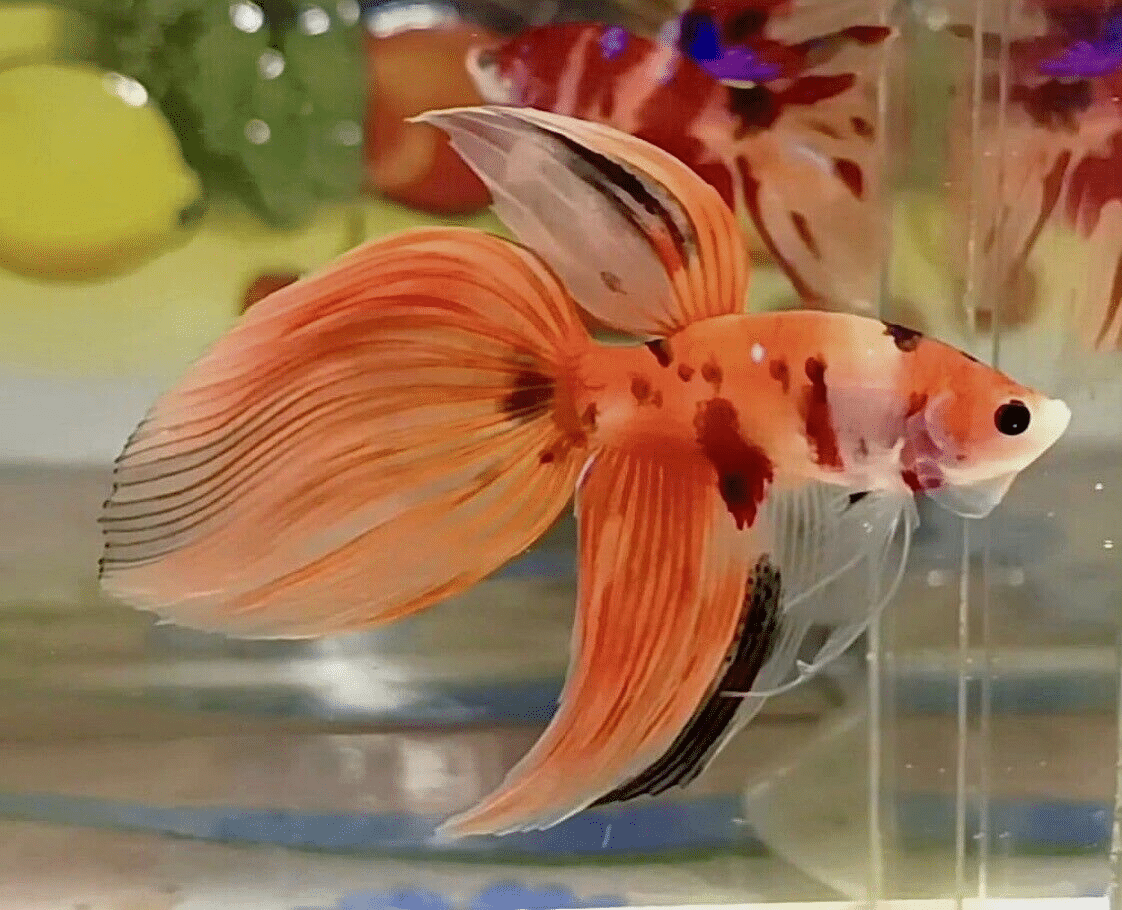


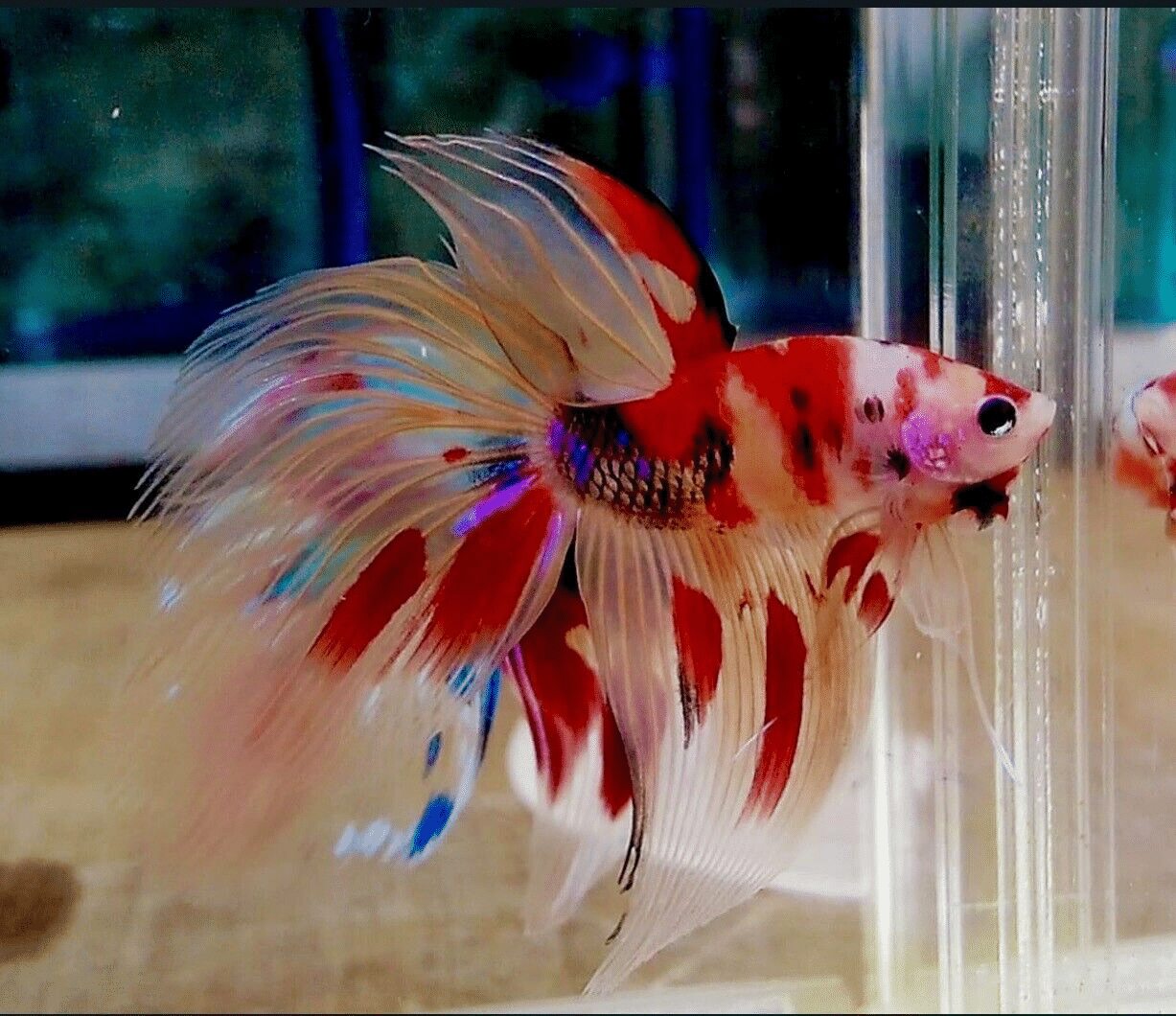
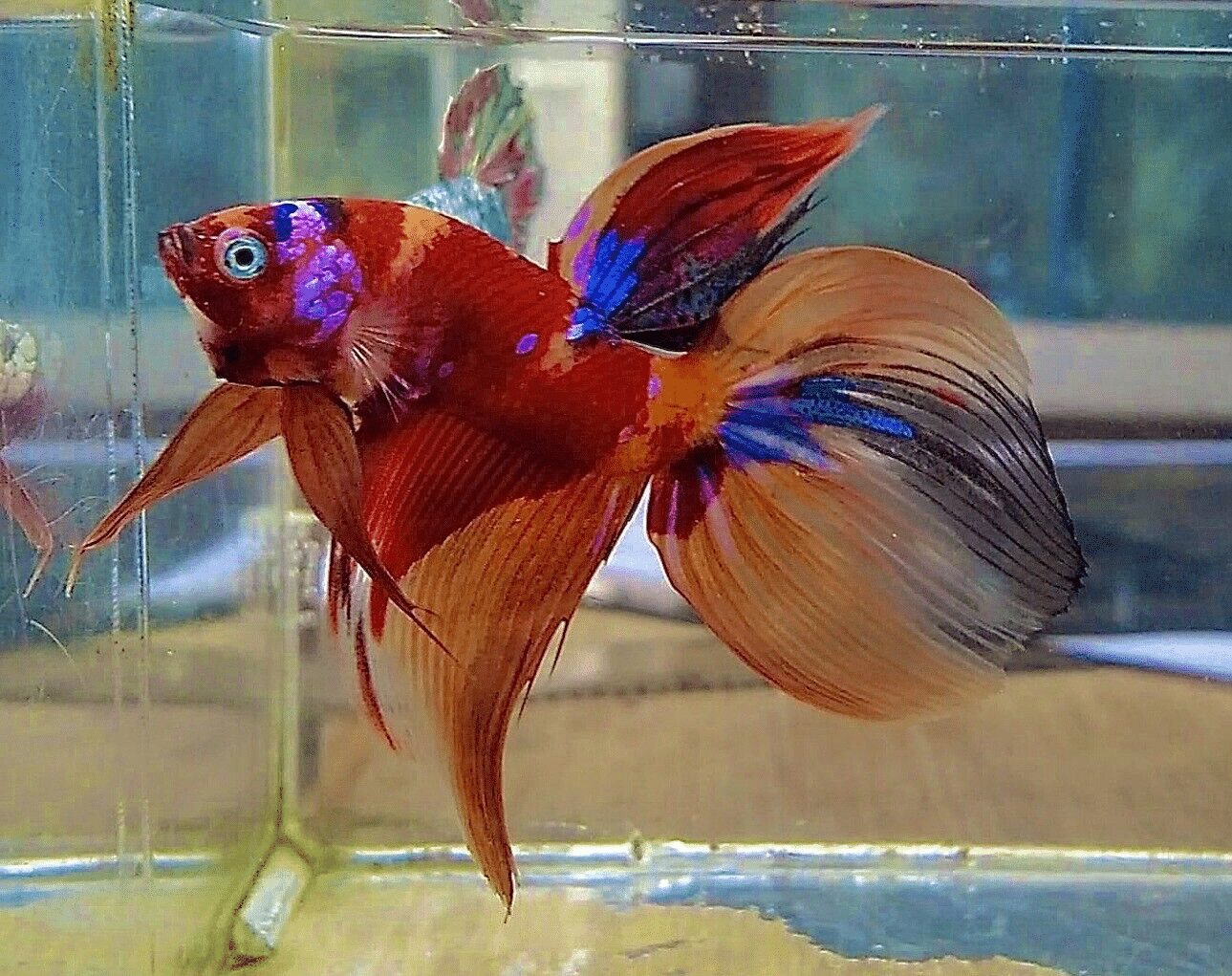
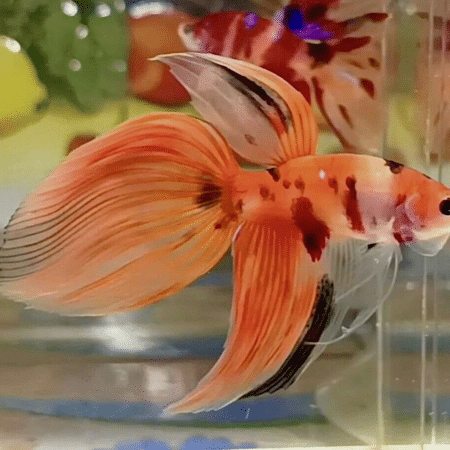
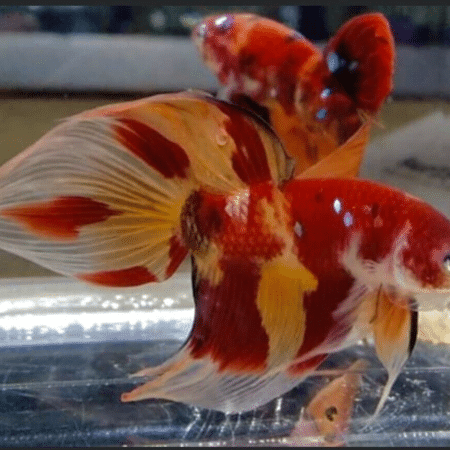
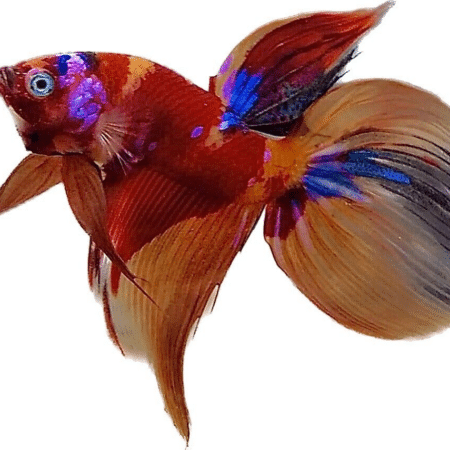
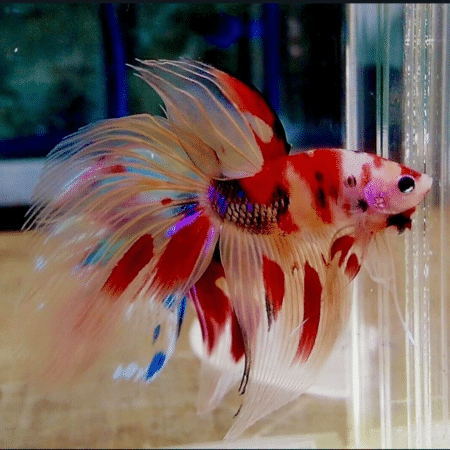
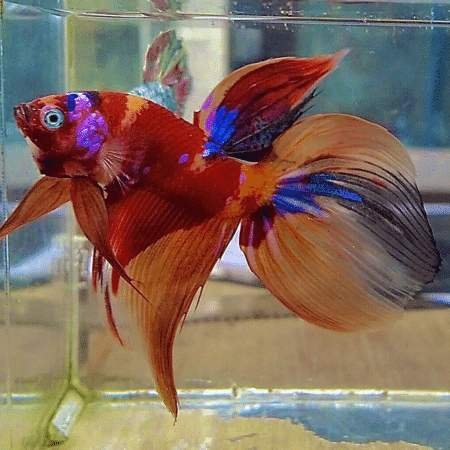












Emily Carter (verified owner) –
I recently brought home a Veiltail Nemo Betta and I couldn’t be happier! As a caring fish parent, I always prioritize the health and happiness of my aquatic friends. This Betta Splendens arrived in perfect condition after a quick shipping process, and it took to its new environment like a champ. Within just a week, it was exploring every nook and cranny of the tank, showcasing its vibrant colors and elegant fins.
What I love most about this specific variety is its playful personality and the way it interacts with me when I approach the tank. Compared to other bettas I’ve kept, this one seems much more vibrant and curious, making it a joy to watch. I also appreciate that it’s a hearty fish, which means it adjusts well to varying water conditions.
For anyone looking to introduce a betta to their aquarium, I highly recommend the Veiltail Nemo. It’s especially perfect for beginners or those wanting a lively addition to their tropical fish collection. Just be sure to provide plenty of space and hiding spots, as they thrive in environments where they can feel secure. I’ll definitely be purchasing another one soon!